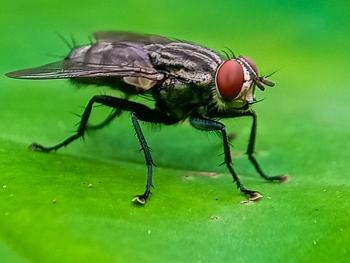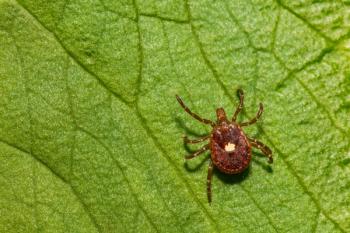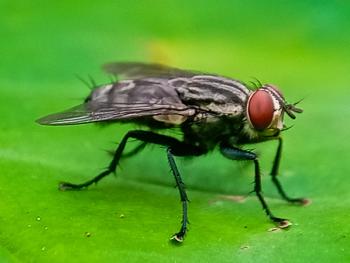
Just Ask the Expert: Baylisascaris procyonis infection
Q. How worried should I be about Baylisascaris procyonis infection in dogs? In which geographic regions is it most prevalent?
Dr. Kazacos welcomes parasitology questions from veterinarians.
To ask your question, e-mail:
With the subject line: Parasitology Question
Q. How worried should I be about Baylisascaris procyonis infection in dogs? In which geographic regions is it most prevalent?
Kevin R. Kazacos, DVM, PhD
A. The prevalence of patent (intestinal) Baylisascaris procyonis infection in dogs is low, but because of the potential seriousness of larval infection (larva migrans) in people and other animals, it is still of concern. I am aware of dozens of cases of patent infections in dogs, but widespread surveys have not been done to determine the actual prevalence.
Large surveys and data from commercial laboratories are presently unreliable because the parasite has not, until recently, been considered or coded in the parasitologic differential diagnosis list. Thus, most cases have been misdiagnosed, most commonly as Toxocara species infection. Veterinarians, technicians, and laboratory personnel are now striving to identify parasite eggs more precisely,1 which should alleviate this problem. Several commercial laboratories have added this parasite to their identification lists, which should yield good data on regional prevalence rates.
Baylisascaris procyonis infection can be expected to occur in dogs wherever it is endemic in raccoons, and the higher the prevalence in raccoons, the greater the likelihood of seeing patent infections in dogs.1,2 In the United States, the highest prevalence rates in raccoons are in the Northeast and Midwest and along the West Coast, where 70% to 100% of raccoons carry the parasite, especially in the fall months.2 Lower prevalence rates are seen in the deep South (0% to 23%), along the southern Atlantic Coast (the Carolinas and south) and Florida (0%), and in the arid regions of the West. However, awareness of local prevalence is important because pockets of higher infection can exist, particularly in urban or suburban areas (e.g. suburban Atlanta, Ga. = 23%, Corpus Christi, Texas = 70%).2,3 But even in areas where there is a high prevalence in raccoons, the prevalence in dogs will be low, on the order of < 2% based on limited studies done in Indiana (Kazacos KR: Unpublished data, 1998).
However, similar to rabies, the seriousness of larval Baylisascaris infection in people and animals makes it imperative to be vigilant in protecting dogs. Dozens of cases of human infection have occurred, mostly with severe neurologic consequences, ocular disease, or both,4 and the parasite has killed more than 100 species of animals, including pets, with fatal neurologic disease.2 Unlike raccoons, which defecate in limited focal areas (latrines), dogs are indiscriminate defecators, so an infected dog—especially a family pet—could cause more widespread yard contamination with a greater potential for human or animal exposure. To date, the parasite has not been seen as a larval or adult patent infection in cats.
There is good news on the treatment and control front concerning B. procyonis infection. The common broad-spectrum anthelmintics used to treat Toxocara species infection in dogs (e.g. pyrantel pamoate, fenbendazole, piperazine) will also eliminate Baylisascaris species.2 In addition, monthly heartworm preventives that eliminate intestinal nematodes, such as Toxocara species, (e.g. milbemycin oxime, ivermectin-pyrantel pamoate) will also eliminate intestinal B. procyonis infections in dogs on the chance they become infected.5,6 This is another good reason to administer these products monthly to dogs, as recommended by the Companion Animal Parasite Council (CAPC).
Other aspects of control would include deterring and not feeding raccoons, cleaning up raccoon latrines so dogs don't have access to the feces (and eggs), and preventing hunting and consumption of wild animals by dogs, since these animals may contain larvae.
REFERENCES
1. Kazacos KR. Unusual fecal parasite in a dog. NAVC Clinician's Brief 2006;4:37-39.
2. Kazacos KR. Baylisascaris procyonis and related species. In: Samuel WM, Pybus MJ, Kocan AA, eds. Parasitic diseases of wild mammals. 2nd ed. Ames: Iowa State University Press, 2001;301-341.
3. Eberhard ML, Nace EK, Won KY, et al. Baylisascaris procyonis in the metropolitan Atlanta area. Emerg Inf Dis 2003;9:1636-1637.
4. Murray WJ, Kazacos KR. Raccoon roundworm encephalitis. Clin Infect Dis 2004;39:1484-1492.
5. Bowman DD, Ulrich MA, Gregory DE, et al. Treatment of Baylisascaris procyonis infections in dogs with milbemycin oxime. Vet Parasitol 2005;129:285-290.
6. Reinemeyer CR, Berthelin-Baker C, Alva R, et al. A controlled evaluation of the efficacy of HEARTGARD PLUS(R) against induced Baylisascaris procyonis infection in dogs. Proc Am Assoc Vet Parasitol 2008;53.
Kevin R. Kazacos, DVM, PhD
Department of Comparative Pathobiology
School of Veterinary Medicine
Purdue University
West Lafayette, IN 47907-2027
Newsletter
From exam room tips to practice management insights, get trusted veterinary news delivered straight to your inbox—subscribe to dvm360.




